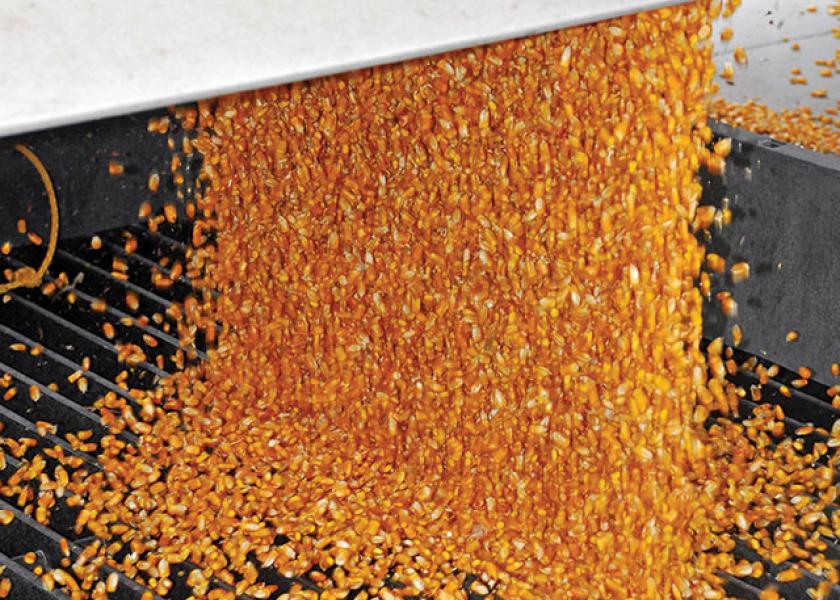U.S. Corn Shipments To China Due For A Pickup in Pace

By Karen Braun
Since last year, China has been importing record volumes of U.S. corn due to a supply shortage and record domestic prices. But U.S. shipments to the Asian country have been slightly disappointing in recent weeks, especially following the standout sales streak at the end of January.
Total U.S. corn exports have not been dragging, though. Data from the U.S. Department of Agriculture on Monday showed that 2.2 million tonnes of corn were inspected for export in the week ended March 11, the second highest for any week on record.
That is only the fourth time since 1983 and the second time this marketing year that weekly U.S. corn inspections, a proxy for exports, topped 2 million tonnes.
But only 16% of last week's corn inspections were destined for China, consistent with the previous three-week average. That is despite China accounting for 36% of all outstanding, unshipped sales as of early March.
China's share of unshipped sales had dropped as low as 20% in January, but Chinese buyers claimed 5.86 million tonnes of U.S. corn in the final week of that month. Since then, shipments have not reflected that sales surge.
In fact, recent U.S. corn exports to China have been a bit lighter than in December and early January, meaning the volumes of U.S. corn arriving at Chinese ports will drift lower in the coming weeks.
As of March 4, USDA data suggested that of the 18.7 million tonnes of U.S. corn China had purchased for 2020-21, some 11.3 million tonnes still needed shipment before the season ends on Aug. 31. Nearly 360,000 tonnes of corn were inspected for shipment to China in the following week.
United States' typical corn customers, Japan and Mexico, are also waiting for a historically large share of the grain they have already purchased, further supporting the continuation of strong exports. About 52% and 53% of respective sales to Japan and Mexico had been shipped as of March 4, though something closer to 60% and 57% are more normal for the date.
Japan and Mexico typically account for about half of annual U.S. corn exports, but they occupy only 35% of current sales due to the unusually large portion devoted to China (32%). Sales to both of those countries are above average for the date.
U.S. exporters had their best March in 2017 with 6.7 million tonnes. Through the first third of this month, exports are likely more than 30% higher than in the comparable period four years ago, meaning March is on pace for a remarkable total.
The all-time high for any month came in May 2018, when the United States shipped 7.75 million tonnes of corn on its way to a record 2017-18 season.
MORE SALES?
USDA last week left 2020-21 exports unchanged at 2.6 billion bushels (66 million tonnes), some 6.6% above the 2017-18 total. Some market participants are still looking for a larger number, and that could particularly be the case if Brazil’s second corn crop comes up short after being planted so late.
Both Brazil and Argentina’s 2018 harvests were poor, which is why so much international corn demand shifted to the United States early that year. Corn export sales were unusually elevated in February and March of 2018.
But U.S. corn sales have been downright lousy in the past couple weeks, falling well below typical levels and raising some doubts over whether USDA’s export target should rise.
Brazil’s 2016 second corn harvest was among its worst on record due to excessive dryness, and U.S. corn sales were exceptionally strong from late April to mid-June. This could suggest that panic buying by importers over losses in Brazil might be a month away yet, if that were to materialize.
As of March 4, U.S. corn export sales for 2020-21 totaled 59.5 million tonnes, some 90% of USDA’s target, well ahead of the recent average of 71%.
(Editing by Richard Pullin)







